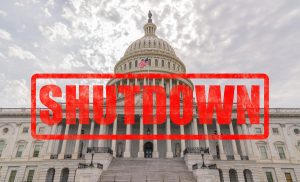Does your agency have an internal service fund (ISF)? If you have centralized management of services like fleet or information technology, you may have one or multiple! But do you know if your ISF is really operating like an ISF? Are you fully recovering the costs of your internal services and using this as a financial planning tool for your organization? Is your rate setting methodology in accordance with industry best practices? Having worked in government agencies and walked a mile in your shoes, we know these questions may sound familiar to you and/or have been ones you’ve even asked. If you’re creating an ISF for the first time or are trying to determine if yours is financially healthy, you don’t have to walk that path alone. We’re breaking down the different types of ISFs, how to set them up, and best practices for rate setting in this multi-series blog.
First, let’s define what type of funds these are and when they are used. ISFs are used to allocate the cost of one department providing goods and services to other departments, as well as to collect funds to cover the future cost of certain expenses. If you’re wondering what a common example of that may be… think no further. Vehicle replacements are one of the most referenced examples and likely one that your agency has. From an accounting perspective, these funds are like enterprise funds, except that they do not serve the public, but rather internal customers… think of your internal departments. Essentially, they operate like a business because they provide services and charge customers. Did you also know that utilization of ISFs is a best practice in local government agencies? These funds can help you achieve greater efficiency, transparency, and accountability in your agency’s operations. When properly funded, the use of these funds mitigates unanticipated budget demands and results in more regularly allocated costs to the contributing funds. Without an ISF, funding must be appropriated on an as-needed basis as expenses arise, which can result in irregular funding requirements.
So, with this background, how do you set an internal service fund (ISF) up?
1. Determine the scope and purpose of the services or goods that your ISF will provide.
This involves identifying who will receive the services/goods (internal departments), what the services/goods are, and the method for how the services/goods will be charged.
2. Establish the funding mechanism and the budget for the ISF.
a. There are two main models of funding an ISF:
i. Pay-as-you-go model: the ISF charges your internal departments only for the actual costs of the services delivered in each period, without accumulating any reserves or capital assets. Essentially, the fund should have a $0 fund balance as of the end of each fiscal year.
ii. Reserve model: the ISF charges your internal departments for the costs of the services plus a portion of the future costs of replacing or upgrading the equipment or facilities used by the ISF, thus building up reserves or capital assets over time and mitigating unanticipated budget demands.
b. The budget for the ISF is based on the projected costs and revenues of the ISF for a fiscal year. The costs include the direct costs of providing the products, such as labor, materials, supplies, and utilities, as well as the indirect costs of supporting the ISF, such as administration, overhead, and depreciation. The revenues include the charges or fees collected from the internal departments, as well as any other sources of income, such as interest. Note: it is a best practice to prepare the budget for the ISF in consultation with the applicable internal departments.
3. Now that you have the cost of the ISF, determine the basis of allocation.
The basis of allocation should bear a relationship to the benefit the respective internal department receives from the service. Costs should be allocated fairly and be based on usage or causal factors relating to costs incurred. With the goal of reducing volatility in the charges to internal departments from year to year, it is a best practice to use a variety of allocation factors. A mix of allocation factors can stabilize the rates and therefore the charges to your internal departments.
4. Implement the ISF.
The budget and corresponding internal department charges should be presented to the City Council with the annual budget for adoption. Upon approval, these should be input into the agency’s financial system. For the internal department charges, we recommend setting up automatic monthly journal entries to post the charges.
Now that the ISF is set up, you need to monitor its performance.
One of the most important aspects of managing an ISF is to check its fiscal health regularly and take corrective actions if needed. We recommend agencies set target funding levels and benchmarks for those that are the reserve model structure to provide a framework in which to measure the ISF’s fiscal health. There are several indicators that can help you measure the fiscal health of your ISF:
1. Cost Recovery:
This shows how well your ISF covers its costs from its revenues. It’s the percentage of your total costs that are paid by your customers.
a. The higher the cost recovery, the more financially independent and stable your ISF is.
b. The lower the cost recovery, the more dependent and vulnerable your ISF is on other sources of funding.
2. Net income:
This is the difference between revenues and total costs (direct and indirect), which indicates how profitable the ISF is overall.
a. A positive net income means that the ISF is covering all its costs and generating a surplus.
b. A negative net income means that the ISF is not covering all its costs and generating a deficit.
3. Reserve balance:
This is the amount of accumulated surplus or deficit that the ISF has at the end of a period, which indicates how solvent the ISF is and how prepared it is for unexpected events or future needs.
a. A positive reserve balance means that the ISF has excess funds that can be used for contingencies or capital investments.
b. A negative reserve balance means that the ISF has a shortfall that needs to be covered by borrowing or transferring from other funds.
c. Its important to remember that an ISF is not intended to be a place to hold cash surpluses or to accumulate too much cash. Its intended to provide for the reimbursement of centralized services and to provide for a reasonable reserve for replacement needs.
4. Reserve ratio:
This is the ratio of reserve balance to annual revenues, which indicates how long the ISF can sustain its operations without any additional revenues.
a. A higher reserve ratio means that the ISF has more financial cushion and resilience.
b. A lower reserve ratio means that the ISF has less financial cushion and resilience.
These indicators can be compared to the budgeted or expected values, as well as to the benchmarks you set up for your ISF. If the indicators show unfavorable results or trends, positive or negative, you may need to consider adjusting your pricing policies or reducing the costs.
With all of this in mind… and back to our original question, do you know if your internal service fund is really operating like an internal service fund? If you’re still left unsure of the answer, we’re always here as a resource whether that is in a consulting capacity, or you check back in a few weeks for the next issue of this multi-part series that will apply the above information to practical examples of specific types of internal service funds – equipment and insurance.




